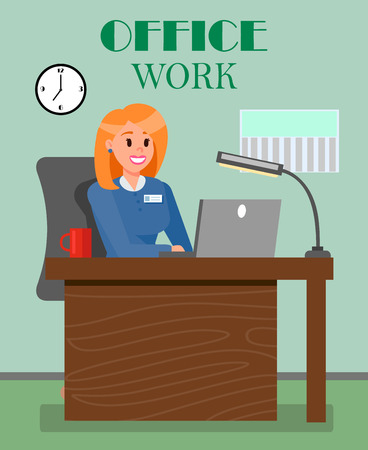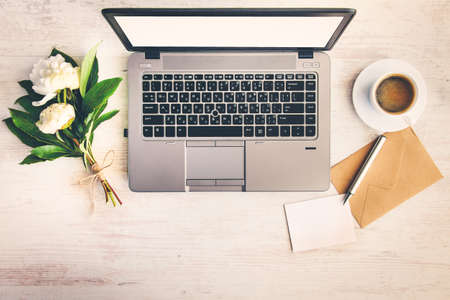1. Understanding the Importance of Job Application Follow-Ups
After submitting a job application in the US, many candidates wonder what comes next. One key step is following up with the employer. In the American job market, this follow-up isn’t just a polite gesture—it’s often expected and can make a real difference in your chances of landing an interview.
Why Do Follow-Ups Matter?
Employers in the US receive hundreds of applications for a single position. A thoughtful follow-up helps you stand out from the crowd and shows genuine interest in the role. It also gives hiring managers a reminder of your application and can prompt them to take another look at your resume.
Expectations of US Employers
| Expectation | What It Means for You |
|---|---|
| Professional Communication | Reach out politely and clearly, using proper language and tone. |
| Timely Response | Follow up within 7-10 days after applying to show proactive interest. |
| Respectful Persistence | One or two follow-ups are appropriate; avoid excessive messages or calls. |
The Impact on Your Candidacy
A well-timed follow-up can:
- Demonstrate your enthusiasm for the position.
- Showcase your communication skills—a top quality employers value.
- Help clarify any details or questions about your application.
- Keep your name fresh in the recruiter’s mind, especially if they’re making final decisions soon.
Key Takeaway
In the US job market, following up after an application isn’t just appreciated—it’s often expected. Choosing the right follow-up method, whether phone call or email, can help you make a positive impression and potentially improve your chances of getting hired.
2. Phone Calls: Advantages and Disadvantages
When Is Making a Phone Call Most Effective?
In the US job market, phone calls can be a powerful follow-up method when used at the right time. A call is most effective if you:
- Recently interviewed and want to thank your interviewer personally
- Haven’t received a response to your email after several days
- Need urgent clarification or updates about your application status
- Have been specifically invited to call for more information
Cultural Perceptions of Phone Calls in the US
Americans generally appreciate direct communication, but also value privacy and time. Here are some cultural points to keep in mind:
- Phone calls are seen as more personal and proactive than emails
- Calling during business hours (usually 9am-5pm) is considered polite
- Unscheduled calls can sometimes be seen as intrusive, so be respectful of timing
- If you need to leave a voicemail, keep it brief and professional
Pros and Cons of Phone Calls for Job Follow-Ups
| Advantages | Disadvantages |
|---|---|
| Shows initiative and enthusiasm | Can interrupt busy hiring managers |
| Allows real-time conversation and immediate feedback | Might feel uncomfortable for those who are shy or anxious |
| Adds a personal touch that emails may lack | If not well-prepared, could make a poor impression |
| You can clarify questions on the spot | Some companies prefer written records for documentation purposes |
Tips for Making an Effective Follow-Up Call
- Prepare your main points before calling—know exactly what you want to say or ask
- Practice a short introduction, mentioning your name and the position you applied for
- If you reach voicemail, leave a clear message with your contact details and reason for calling
- Always remain polite and thank them for their time, no matter the outcome of the call
Understanding these aspects will help you decide if a phone call is the right follow-up choice in your US job search.

3. Emails: Advantages and Disadvantages
Why Choose Email for Follow-Ups?
Email is one of the most common and widely accepted ways to follow up after a job application or interview in the US. It offers convenience, a written record, and gives both parties time to consider their responses. However, its important to understand both the benefits and the limitations of using email as your main follow-up method.
Advantages of Email Follow-Ups
| Advantage | Description |
|---|---|
| Convenience | You can send an email at any time, making it easy to fit into your schedule. |
| Professional Record | Emails create a documented trail of communication that you can refer back to if needed. |
| Thoughtful Responses | Both you and the employer have time to carefully craft your messages. |
| Less Intrusive | Email doesn’t interrupt someone’s day like a phone call might. |
| Standard Practice | Most US employers expect follow-ups by email, especially for non-urgent matters. |
Disadvantages of Email Follow-Ups
| Disadvantage | Description |
|---|---|
| Slower Response Times | You might wait days or even weeks for a reply, since emails are easy to overlook. |
| Lack of Personal Touch | Email lacks the warmth and immediacy of a phone call or face-to-face chat. |
| Easily Missed or Filtered | Your message may end up in spam or get lost among many other emails. |
| No Immediate Feedback | If you have questions or need clarification, youll need to wait for their response. |
Email Etiquette in the US Job Market
The tone and style of your email matter just as much as the content. Here are some best practices for professionalism:
- Use a Clear Subject Line: Make it obvious why you’re reaching out (e.g., “Thank You for the Interview – [Your Name]”).
- Be Concise and Direct: Respect the recipient’s time; keep your message brief and focused.
- Use Proper Greetings and Closings: Start with “Dear [Name]” and end with “Best regards,” “Sincerely,” or similar professional closings.
- Edit Carefully: Proofread for grammar, spelling, and tone. Sloppy emails can leave a bad impression.
- Avoid Over-Following Up: Sending too many emails can be seen as pushy. If you don’t get a response, wait at least a week before sending another message.
- Add Your Contact Information: Always include your phone number and LinkedIn profile in your signature so employers can easily reach you through other channels if needed.
- Respect Business Hours: Send emails during standard business hours (typically 9am–5pm local time) to show professionalism.
- Avoid Informal Language: Even if you had a friendly interview, maintain professionalism in writing (skip emojis and slang).
- Double-Check Recipients: Make sure you’re sending your message to the correct person and use their preferred name or title.
- No Attachments Unless Necessary: Only include attachments if requested by the employer; otherwise, keep things simple.
Email Response Time Expectations in the US
| Email Sent On… | Typical Response Time Expected | If No Response… |
|---|---|---|
| Monday–Thursday (Business Hours) | 1–3 business days | You may send one polite follow-up after 1 week |
| Friday or Weekend | Might not be read until Monday; expect delays | Wait until Tuesday before following up |
| Holidays/Out of Office | No reply until after return | If urgent, check company auto-reply for alternate contacts |
Email is an effective follow-up tool in the US job market when used thoughtfully and professionally. Understanding its strengths—and knowing how to avoid its pitfalls—can help you make a great impression during your job search process.
4. How to Decide: Factors Influencing Your Follow-Up Method
When it comes to following up after a job application or interview in the US, choosing between a phone call and an email depends on several important factors. Understanding these can help you make the right impression and boost your chances of success.
Industry Norms
Certain industries have established preferences for communication styles. For example, tech companies and creative agencies often favor emails due to their fast-paced, digital environments. In contrast, sales or customer service roles might be more open to phone calls, as verbal communication is central to those jobs.
Company Culture
The culture of the company plays a big role in your follow-up approach. If the organization is known for being formal and structured, an email may be more appropriate. For startups or smaller teams with a casual vibe, a friendly phone call could set you apart.
Timing
Timing matters when you decide how to follow up. If you need to get a quick answer—such as clarifying interview logistics—a phone call might be best. However, if youre simply expressing gratitude or checking on your application status, an email gives the employer time to respond at their convenience.
Job Level
The seniority of the position can also influence your method. Entry-level candidates generally stick to emails, while higher-level professionals sometimes use phone calls for a more direct touch.
Quick Reference Table
| Factor | Phone Call | |
|---|---|---|
| Industry Norms | Tech, Creative, Professional Services | Sales, Customer Service, Hospitality |
| Company Culture | Formal/Structured Companies | Casual/Fast-Paced Startups |
| Timing | No urgent response needed | Need quick feedback or answer |
| Job Level | Entry-Level Positions | Mid-to-Senior Level Roles |
Tip:
If youre unsure which method to use, check if the recruiter or hiring manager has shown a preference in past communications. Matching their style can show that you pay attention and respect their workflow.
5. Best Practices for Effective Follow-Ups
Crafting the Perfect Message
When following up after a job application or interview in the US, the way you write your message matters. Whether you choose to call or email, keep your communication professional, polite, and concise. For emails, use a clear subject line like “Thank You for the Interview – [Your Name]” or “Following Up on [Position Title] Application.” For phone calls, prepare a brief script and practice before calling.
| Method | Key Tips |
|---|---|
| – Use a professional greeting (“Dear [Name],”) – Thank them for their time – Mention the specific position – Express continued interest – Keep it short (3-4 sentences) – Proofread before sending |
|
| Phone Call | – Call during business hours (typically 9 am – 5 pm) – Introduce yourself clearly – Be polite and respectful of their time – State your reason for calling – Prepare what to say if you reach voicemail |
Ideal Timing for Follow-Ups
Timing your follow-up is crucial in the US job market. Here are some general guidelines:
- After submitting an application: Wait about one week before following up.
- After an interview: Send a thank-you email within 24 hours. If you haven’t heard back after another week, consider a second follow-up.
- Avoid Mondays and Fridays: Midweek is usually best for reaching busy employers.
Handling Employer Responses
Employers may respond in different ways. Here’s how to handle common scenarios:
| Employer Response | Your Action |
|---|---|
| No response after follow-up | Wait another week, then send one final brief message. If there’s still no reply, move on to other opportunities. |
| Positive response (request for more info or second interview) | Reply promptly and provide any requested materials. Express appreciation for their continued consideration. |
| Negative response (position filled or not selected) | Thank them for their time and ask if they can keep your resume on file for future openings. |
Quick Tips for Success
- Always personalize your message with the employer’s name and details from your interaction.
- If leaving a voicemail, speak slowly and clearly, leave your name and phone number twice.
- Avoid excessive follow-ups; two is typically enough unless otherwise invited.
- Stay positive and professional—every interaction leaves an impression!


